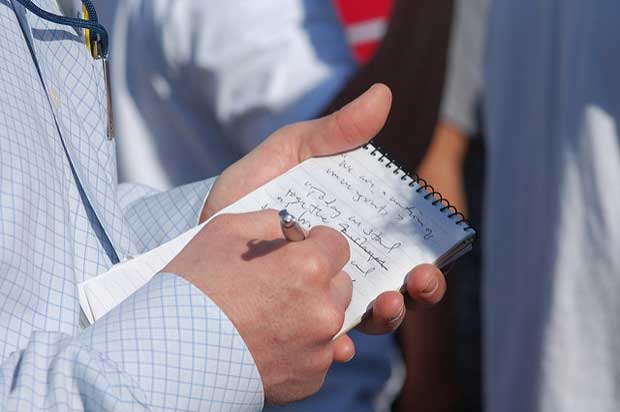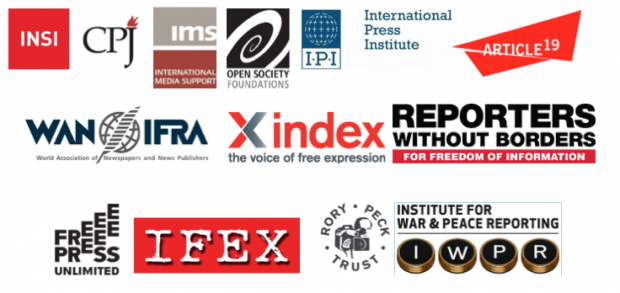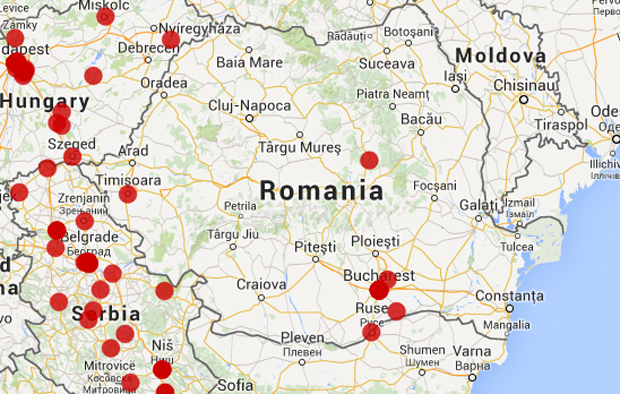28 Jun 2016 | Magazine, Magazine Contents, mobile, Volume 45.02 Summer 2016
[vc_row][vc_column][vc_custom_heading text=”Index on Censorship has dedicated its milestone 250th issue to exploring the increasing threats to reporters worldwide. Its special report, Truth in Danger, Danger in Truth: Journalists Under Fire and Under Pressure, is out now.”][vc_row_inner][vc_column_inner width=”1/2″][vc_column_text]
Highlights include Lindsey Hilsum, writing about her friend and colleague, the murdered war reporter Marie Colvin, and asking whether journalists should still be covering war zones. Stephen Grey looks at the difficulties of protecting sources in an era of mass surveillance. Valeria Costa-Kostritsky shows how Europe’s journalists are being silenced by accusations that their work threatens national security.
[/vc_column_text][/vc_column_inner][vc_column_inner width=”1/2″][vc_single_image image=”76283″ img_size=”full”][/vc_column_inner][/vc_row_inner][vc_column_text]
Kaya Genç interviews Turkey’s threatened investigative journalists, and Steven Borowiec lifts the lid on the cosy relationships inside Japan’s press clubs. Plus, the inside track on what it is really like to be a local reporter in Syria and Eritrea. Also in this issue: the late Swedish crime writer Henning Mankell explores colonialism in Africa in an exclusive play extract; Jemimah Steinfeld interviews China’s most famous political cartoonist; Irene Caselli writes about the controversies and censorship of Latin America’s soap operas; and Norwegian musician Moddi tells how hate mail sparked an album of music that had been silenced.
The 250th cover is by Ben Jennings. Plus there are cartoons and illustrations by Martin Rowson, Brian John Spencer, Sam Darlow and Chinese cartoonist Rebel Pepper.
You can order your copy here, or take out a digital subscription via Exact Editions. Copies are also available at the BFI, the Serpentine Gallery, MagCulture, (London), News from Nowhere (Liverpool), Home (Manchester) and on Amazon. Each magazine sale helps Index on Censorship continue its fight for free expression worldwide.
Index on Censorship magazine was started in 1972 and remains the only global magazine dedicated to free expression. It has produced 250 issues, with contributors including Samuel Beckett, Gabriel García Marquéz, Nadine Gordimer, Arthur Miller, Salman Rushdie, Margaret Atwood, and many more.
[/vc_column_text][/vc_column][/vc_row][vc_row][vc_column][vc_custom_heading text=”SPECIAL REPORT: DANGER IN TRUTH, TRUTH IN DANGER” css=”.vc_custom_1483444455583{margin-right: 0px !important;margin-left: 0px !important;border-bottom-width: 1px !important;padding-top: 15px !important;padding-bottom: 15px !important;border-bottom-color: #455560 !important;border-bottom-style: solid !important;}”][vc_column_text]
Journalists under fire and under pressure
Editorial: Risky business – Rachael Jolley on why journalists around the world face increasing threats
Behind the lines – Lindsey Hilsum asks if reporters should still be heading into war zones
We are journalists, not terrorists – Valeria Costa-Kostritsky looks at how reporters around Europe are being silenced by accusations that their work threatens national security
Code of silence – Cristina Marconi shows how Italy’s press treads carefully between threats from the mafia and defamation laws from fascist times
Facing the front line – Laura Silvia Battaglia gives the inside track on safety training for Iraqi journalists
Giving up on the graft and the grind – Jean-Paul Marthoz says journalists are failing to cover difficult stories
Risking reputations – Fred Searle on how young UK writers fear “churnalism” will cost their jobs
Inside Syria’s war – Hazza Al-Adnan shows the extreme dangers faced by local reporters
Living in fear for reporting on terror – Ismail Einashe interviews a Kenyan journalist who has gone into hiding
The life of a state journalist in Eritrea – Abraham T. Zere on what it’s really like to work at a highly censored government newspaper
Smothering South African reporting – Carien Du Plessis asks if racism accusations and Twitter mobs are being used to stop truthful coverage at election time
Writing with a bodyguard – Catalina Lobo-Guerrero explores Colombia’s state protection unit, which has supported journalists in danger for 16 years
Taliban warning ramps up risk to Kabul’s reporters – Caroline Lees recalls safer days working in Afghanistan and looks at journalists’ challenges today
Writers of wrongs – Steven Borowiec lifts the lid on cosy relationships inside Japan’s press clubs
The Arab Spring snaps back – Rohan Jayasekera assesses the state of the media after the revolution
Shooting the messengers – Duncan Tucker reports on the women investigating sex-trafficking in Mexico
Is your secret safe with me? – Stephen Grey looks at the difficulties of protecting sources in an age of mass surveillance
Stripsearch cartoon – Martin Rowson depicts a fat-cat politician quashing questions
Scoops and troops – Kaya Genç interviews Turkey’s struggling investigative reporters
[/vc_column_text][/vc_column][/vc_row][vc_row][vc_column][vc_custom_heading text=”IN FOCUS” css=”.vc_custom_1481731813613{margin-right: 0px !important;margin-left: 0px !important;border-bottom-width: 1px !important;padding-top: 15px !important;padding-bottom: 15px !important;border-bottom-color: #455560 !important;border-bottom-style: solid !important;}”][vc_column_text]
Rebel with a cause – Jemimah Steinfeld speaks to China’s most famous political cartoonist
Soap operas get whitewashed – Irene Caselli offers the lowdown on censorship and controversy in Latin America’s telenovelas
Are ad-blockers killing the media? – Speigel Online’s Matthias Streitz in a head-to-head debate with Privacy International’s Richard Tynan
Publishing protest, secrets and stories – Louis Blom-Cooper looks back on 250 issues of Index on Censorship magazine
Songs that sting – Norwegian musician Moddi explains how hate mail inspired his album of censored music
[/vc_column_text][/vc_column][/vc_row][vc_row][vc_column][vc_custom_heading text=”CULTURE” css=”.vc_custom_1481731777861{margin-right: 0px !important;margin-left: 0px !important;border-bottom-width: 1px !important;padding-top: 15px !important;padding-bottom: 15px !important;border-bottom-color: #455560 !important;border-bottom-style: solid !important;}”][vc_column_text]
A world away from Wallander – An exclusive extract of a play by late Swedish crime writer Henning Mankell
“I’m not prepared to give up my words” – Norman Manea introduces Matei Visniec, a surreal Romanian play where rats rule and humans are forced to relinquish language
Posting into the future – An extract from Oleh Shynkarenko’s futuristic new novel, inspired by Facebook updates during Ukraine’s Maidan Square protests
[/vc_column_text][/vc_column][/vc_row][vc_row][vc_column][vc_custom_heading text=”COLUMNS” css=”.vc_custom_1481732124093{margin-right: 0px !important;margin-left: 0px !important;border-bottom-width: 1px !important;padding-top: 15px !important;padding-bottom: 15px !important;border-bottom-color: #455560 !important;border-bottom-style: solid !important;}”][vc_column_text]
Index around the world: Josie Timms recaps the What A Liberty! youth project
[/vc_column_text][/vc_column][/vc_row][vc_row][vc_column][vc_custom_heading text=”END NOTE” css=”.vc_custom_1481880278935{margin-right: 0px !important;margin-left: 0px !important;border-bottom-width: 1px !important;padding-top: 15px !important;padding-bottom: 15px !important;border-bottom-color: #455560 !important;border-bottom-style: solid !important;}”][vc_column_text]
The lost art of letters – Vicky Baker looks at the power of written correspondence and asks if email can ever be the same
[/vc_column_text][/vc_column][/vc_row][vc_row][vc_column][vc_custom_heading text=”SUBSCRIBE” css=”.vc_custom_1481736449684{margin-right: 0px !important;margin-left: 0px !important;border-bottom-width: 1px !important;padding-bottom: 15px !important;border-bottom-color: #455560 !important;border-bottom-style: solid !important;}”][vc_column_text]Index on Censorship magazine was started in 1972 and remains the only global magazine dedicated to free expression. Past contributors include Samuel Beckett, Gabriel García Marquéz, Nadine Gordimer, Arthur Miller, Salman Rushdie, Margaret Atwood, and many more.[/vc_column_text][vc_row_inner][vc_column_inner width=”1/2″][vc_single_image image=”76572″ img_size=”full”][/vc_column_inner][vc_column_inner width=”1/2″][vc_column_text]In print or online. Order a print edition here or take out a digital subscription via Exact Editions.
Copies are also available at the BFI, the Serpentine Gallery, MagCulture, (London), News from Nowhere (Liverpool), Home (Manchester), Calton Books (Glasgow) and on Amazon. Each magazine sale helps Index on Censorship continue its fight for free expression worldwide.
 SUBSCRIBE NOW[/vc_column_text][/vc_column_inner][/vc_row_inner][/vc_column][/vc_row]
SUBSCRIBE NOW[/vc_column_text][/vc_column_inner][/vc_row_inner][/vc_column][/vc_row]
27 Apr 2016 | Magazine, mobile, Volume 45.01 Spring 2016

Reporters shouldn’t forget old techniques for checking information. Image: Alex Steffler/ Flickr /Creative Commons
Can you stand it up? Those five words were the ones I probably uttered more than any other when editing a daily newspaper. Excited reporters would be fed a diet of rumours: a member of parliament has left his wife, the chief constable has been suspended. These snippets would then be thrown into the daily news conference. And, with some exaggerated world-weariness, I would ask the key question. Can you stand it up? I never heard about half of the stories again.
Our advantage was that when a lead emerged at midday, we had nine hours to stand it up. If we couldn’t make it watertight we could give ourselves another 24 hours. In today’s digital world the pressure is on to push the button as soon any unsubstantiated tale flashes across our Twitter feeds. And the rush to publish means half-baked stories, outdated pictures and factual errors appear on websites that should know better. The irony is that verification has never been easier. My staff used to tread a regular path to our library to consult Dod’s Parliamentary Companion, Bartholomew’s Gazetteer and our own cuttings. Now you can check almost everything online. So why don’t we? As Spotlight, the Oscar-winning Hollywood film on investigative journalism shows, sourcing, checking and re-checking is how you nail whether a story stands up. In the world of 24-hour news and digital everything, those traditional techniques should not be forgotten. They include:
- Be suspicious of everything. Take nothing at face-value. Check for vested interests. Trust no-one – even good contacts.
- Your job is to confirm things. If you can’t, try harder. If you really can’t, don’t publish.
- Always go to primary sources. Ask the chief constable if he is being suspended. Ask the authority chairman. If they won’t talk, find the committee members – all of them. When my neighbour was killed the local paper splashed it and got three facts wrong. Nobody from the paper had called the family (or me for that matter). Nobody bothered to make the effort. Shocking.
- Follow the two-sources rule. Get everything verified by at least two trustworthy sources. Ideally on the record.
- Use experts. There are universities, academics, specialists who will flag up credibility issues. Experts also know other experts.
- Every story has a paper trail. There are still archives (try LexisNexis), court papers, Company House, Tracesmart. Has the same mistake been made before?
- Ask yourself the key questions. What else can I look at? Who else can I talk to? Is it balanced? Did I write the headline first and make the story fit?
- Make sure the readers understand what is opinion and what is fact. And that includes the headline.
- Sweat the small stuff. Dates, spelling, names, figures, statistics. Don’t forget the who, what, why, where, when and how.
- Evaluate the risk. There are times when with all the rigorous checking, a story might still only be 99%. If instinct and public interest tell you to publish – pass it to the editor. That is what he or she is paid for. And, with the other nine rules followed thoroughly, hopefully the editor won’t need to ask the key question.
Peter Sands is the former editor of UK daily newspaper the Northern Echo and runs media consultancy Sands Media Services. This story is an extract from a longer report by First Draft’s Alastair Reed about the importance of verification to stop the spread of hoaxes and propaganda online.
You can read the full feature in the current issue of Index on Censorship magazine (see subscription details here)
25 Jan 2016 | Afghanistan, Asia and Pacific, Campaigns, mobile, Statements

In response to the attacks on Tolo TV on 20 January, in which eight people have been killed and 30 others injured, we stand in solidarity with the Afghan media community. We condemn this and all other attacks on Afghanistan’s journalists unreservedly and applaud their courage to stand together undeterred by those who seek to silence them. We want to tell our colleagues throughout Afghanistan they are not alone; the international community is behind them. The journalists and media workers of Afghanistan are playing a leading role in working fearlessly to ensure that the voices of violent extremists do not dominate the news agenda. We remain ready to help them in this perilous endeavour.
Signed by (and including links to additional statements on the Tolo attack from these organizations),
Article 19, UK
Committee to Protect Journalists, USA
Free Press Unlimited, Netherlands
Index on Censorship, UK
Institute for War and Peace Reporting, UK
International Freedom of Expression Exchange (IFEX), Canada
International News Safety Institute UK
International Media Support, Denmark
International Press Institute, Austria
World Association of Newspapers, France
Open Society Foundations, Program on Independent Journalism, UK
Reporters Without Borders, France
Rory Peck Trust, UK
27 Oct 2015 | Europe and Central Asia, mobile, News, Romania

Romania has a lot of high-calibre journalists to its name. However, many media outlets are now fighting to survive while maintaining professional standards due to judicial investigations, political scandals and struggles with high debt loads. This is according to the authors of The Men Who Bit the (Watch) Dogs, which explores the media landscape in the country.
The report focuses on transparency and ownership of the media — particularly the most influential medium, television, over the past 25 years — from post-communist enthusiasm to today’s chaotic mix of business models.
While journalists in the early 1990s were independent of the pressures that marked the Soviet age, most of the 1,200 newspapers that were established at the time didn’t take off. Speaking to Index on Censorship, one of two Romanian academics behind the report, Manuela Preoteasa from think tank The Centre for Media Transparency, explains that at the time, well-known international media companies just weren’t interested in quality journalism.
“As we demonstrated in the report, the market was kept half-closed during the early 90s, which means that it was not open to foreign investors,” Preoteasa says. As the report highlights, the “market that was inhospitable to the promotion of professional journalism” and so “foreign investors had to focus solely on commercial success”.
The ethos of the era seemed to be: “We don’t sell our country to foreigners.” Foreign investors could not own a licence without a Romanian partner, and apart from state-owned channels, no other private entity could apply. For nine years, only local licences for each of the 41 counties and Bucharest were available.
With ownership of the media confined a handful of tycoons, many outsiders would have lost interest. “Show me a serious TV investor who would have been willing to invest in such an unfriendly market,” Preoteasa says. “I strongly believe that the media market was intentionally kept closed to serious investors.”
Print was different. “The history of the last decade shows that print media could not exist on its own, but only as part of a conglomerate, and the conglomerates were formed around TV stations,” Preoteasa explains. “That is why the TV industry has such a strong influence.”
Economically, many of these media outlets relied on state advertising. Some TV stations — already benefiting from debt cancellations and debt rescheduling — started to receive public money as state-owned companies began to advertise. The scheme was introduced by the government led by former Prime Minister Adrian Năstase (2000-2004) and was soon adopted by local politicians and businessmen.
Romania’s unfriendly business environment, high taxes, bureaucracy and a chronic economic instability also challenged the viability of commercial models within the media, the report says. Other challenges include “the lack of a clear distinction between information and opinion and the absence of marketing- and sales-related knowledge”.
These days, the media industry faces serious legal problems that involve either the owners of the main media groups or the groups themselves. Media owners such as Adrian Sârbu, Dan Voiculescu, Sorin Ovidiu Vântu, Sebastian Ghiţă and Dinu Patriciu have all been on trial or are under various criminal investigations.
In a young democracy, the media should play a key role in holding the powerful to account. However, this doesn’t seem to be the case in Romania.
So are there any signs of hope? “I believe the initiative will come from the telecom industry,” Preoteasa says. As to whether the telecom industry will swallow the existent media or would it invent a new one, the answer lies somewhere in between. “I am sure the online media started to have a say and the pressure from the interactive medium is high,” she says, offering an open suggestion: “Someone should look carefully at what young people are looking for and perhaps this will reveal the answer about what might come next.”
This article was posted on 27 October 2015 at indexoncensorship.org
Mapping Media Freedom
Click on the bubbles to view reports or double-click to zoom in on specific regions. The full site can be accessed at https://mappingmediafreedom.org/
|
![]() SUBSCRIBE NOW[/vc_column_text][/vc_column_inner][/vc_row_inner][/vc_column][/vc_row]
SUBSCRIBE NOW[/vc_column_text][/vc_column_inner][/vc_row_inner][/vc_column][/vc_row]


